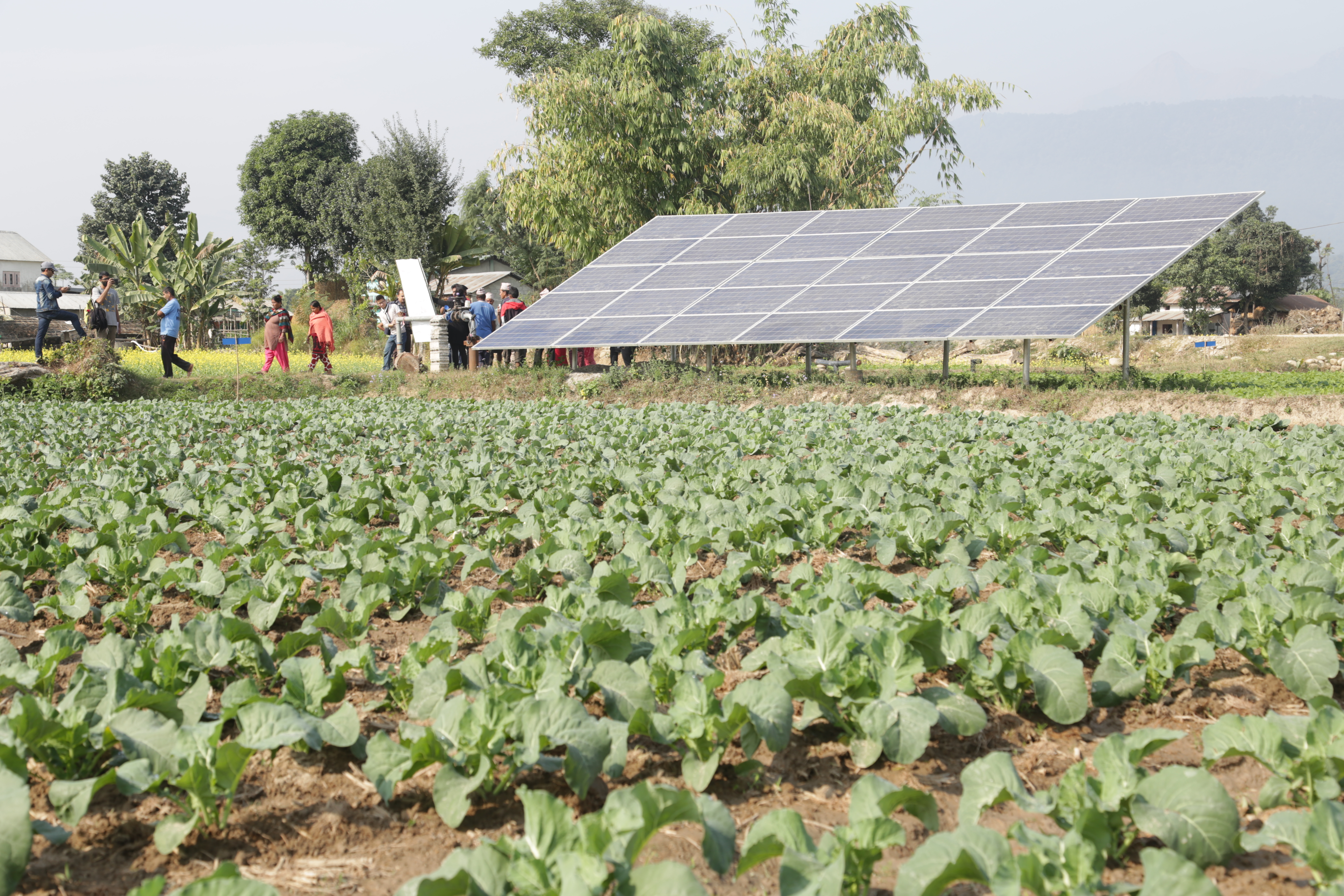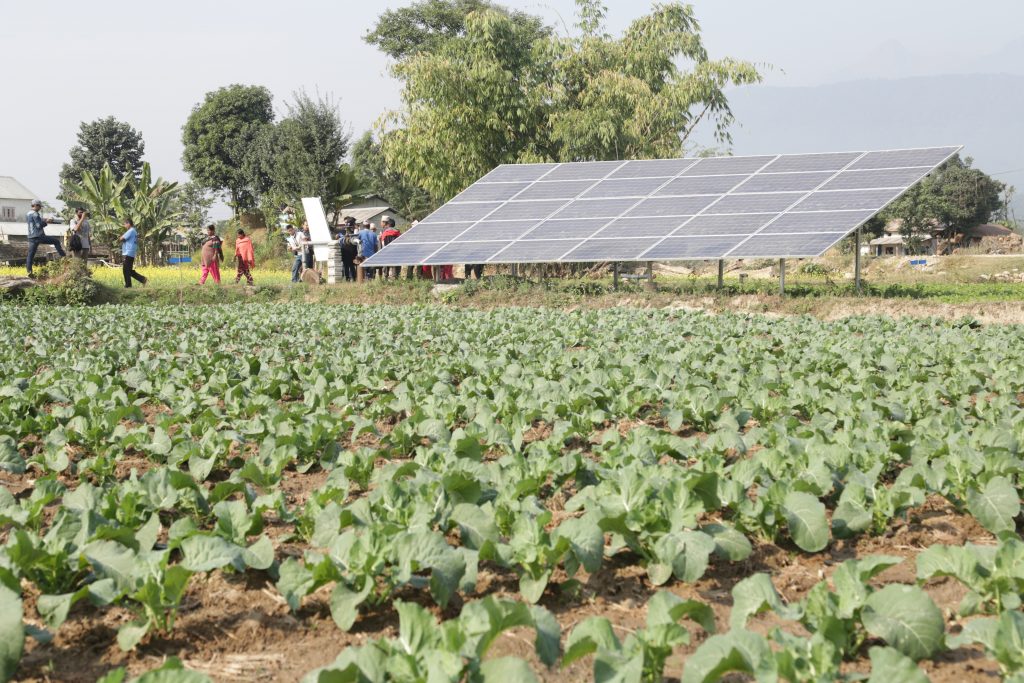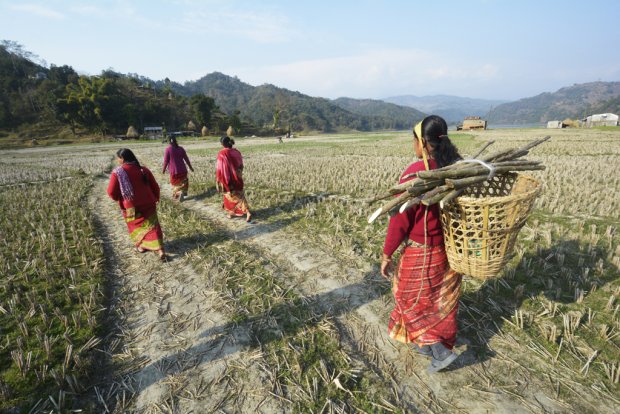Climate-Smart Village approach; Needs and Opportunities
- Pitambar Sigdel


The Climate Smart Village (CSV) approach is an agricultural research for development approach to test, through participatory methods, technological and institutional options for dealing with climate change in agriculture. It aims to generate evidence at local scales of what climate-smart agricultural options work best, where, why, and how, and use this evidence to draw out lessons for policy makers, agricultural development practitioners, and investors from local to global levels.
This approach incorporates effectiveness of a variety options (practices, technologies, services, programs, and policies) not only to enhance productivity and raise incomes, but also to build climate resilience, increase adaptive capacity. Climate-smart agriculture interventions are considered in a broad sense by including practices, technologies, climate information services, insurance, institutions, policies, and finance.
The research carried out by the Climate Change, Agriculture and Food Security (CCAFS), a leading institution working on the climate change and agriculture, shows that Climate –Smart Village (CSV) approach has a high potential for scaling out promising climate-smart agriculture technologies, practices and services. The CSV approach incorporates evaluation of climate-smart technologies, practices, services, and processes relevant to local climatic risk management and identifies opportunities for maximizing adaptation gains from synergies across different interventions and recognizing potential mal-adaptation and trade-offs. It ensures that these are aligned with local knowledge and link into development plans.
Climate smart villages envision providing the village communities with greater facilities for education, employment, energy, clean water, healthcare facilities, empowerment of women, transportation and communication etc. in each village. It integrates natural, human and agricultural resources into sustainable development models with maximum utilization of human and natural resources providing opportunities for appropriate trainings for expertise development. Implementing such models widely may reduce the pressure on cities making life in villages and small towns much easier than at present. It also aims to provide conceptual framework for the farmers for organic agricultural production lessening the harms that might simply result from the use of harmful chemicals, pesticides, and insecticides.
It is crucial to develop strategies to enhance adaptation capacity in agriculture sector. CSV enables the local farmers to better adapt to climate change primarily in agriculture and natural resource management such as land and water. In CSV, technologies are prioritized based on local vulnerability and capacity. This works with same local stakeholders in the specific location in order to identify risks, define vulnerable communities, identify and priorities adaptation options and setting time-bound targets. Identifying and establishing local level entities to coordinate and implement CSVs with local government plans and priorities are crucial at this level. Such a mechanism at local level reduces duplication of the same efforts by different institutions and creates synergies among the adaptation programs to be implemented by different organizations at local level.
Agricultural productivity plays a vital role for human survival. Life is almost impossible without agriculture production in the world. Country's overall development and agriculture are directly linked to each other but agriculture is given less priority than education, health, security or sanitation in many countries.
Production is in risk for yielding sufficient food crops to fulfill the demand of ever growing population of the world. Inability to adapt climate friendly crops is also adding the plight as well. Unfavorable weather is one of the challenging risks across the world for better agricultural productivity. Different agricultural scientists have proposed several technological, institutional, and policy interventions to help farmers adapt to current and future weather variability and to mitigate greenhouse gas (GHG) emissions.
This CVS approach can be ideal and help a lot to farmers and other stakeholders. Village/community agriculture land use plans and contingency plans considering current and future climate risks, agrological and social economic conditions, and markets; Portfolios of agricultural practices, technologies and programs that don't become maladaptive in future climate.
It provides strategic guidance before and during the planting season on the most suitable Climate Smart Agriculture practices, technologies, services, processes that is done in a participatory mode with local farmer groups such as farmers’ self-help groups, water-users associations, local extensions systems, or local private-sector actors. Tactical guidance to farmers on using real –time weather forecasts and value-added information and communication technology (ICT)-based agro advisories and policy-level guidance on barriers approach provided to farmer and stakeholder by CSV; and Policy-level guidance on barriers and option supports to unlock CSA with local and national development, including consideration of financial needs to drive scaling.
Though mention worthy, climate-smart village has shown promise at the local scale, it still lingers to be friendly in the global scale. Adaption to climate change may involve nonagricultural strategies such a migration, outside employment and diversification from agriculture. Now, it's already occurring in the population rich and resource scarce countries of south Asia and Africa.
Similarly in the context of Africa, poor infrastructure related to agriculture, including technologies services, input and access to markets are the major issues in subsistence agriculture systems, there is also little capital available for investment in agriculture, which limits development of adaptation options such as demand-based climate information services and crop insurance. Another key constraint could be that CSA technologies are not well targeted because trade-offs among interventions are not well understood. There is often a mismatch and lack of dialogue between science and policy needs in general about CSA.
There is still a need for greater evidence for the CSV approach in different Agro ecological environments. It is especially important to understand the trade-offs between food security, adaptation, and mitigation in current and future socioeconomic and climate scenarios. More research is needed to demonstrate that adaptation strategies do not become maladaptive. The role of an appropriate monitoring and evaluation framework and indicators of climate smartness that can be easily measured becomes very important. It is important that agriculture in developing countries should be resilient to climatic risks as well as increase production to meet increasing food demands.
According to Food and Agriculture Organization (FAO) 2015, Global food production has increased in the past few decades, almost 800 million people still have insufficient food, especially in South and Southeast Asia, the Caribbean, and SubSaharan Africa. Moreover, global food production must double by 2050 to match population and income growth and much of this must happen in Asia and Africa. These regions are characterized by high population growth, widespread poverty, and low agricultural productivity.
The CCAFS started piloting the CSV approach in 2012 in and South Asia. In 2014, more projects were established in Latin America, Currently, there are 36 CSV sites across the CCAFS's focal regions. The global representativeness of the CSV site network is evaluated using a climate analog tool.
It is clear that the current CSV sites represent a large agricultural area of the world facing diverse climatic risks, and these sites will remain crucial for adaptation learning even in the future. The CSV approach followed in Asia, Africa, and Latin America is very similar but highly contextualized in local situations.
Recent Climate analog studies indicate that the lessons learned at the CSV sites would be relevant to adaptation planning in a large part of global agricultural land even under scenarios of climate change. It is important that agriculture in developing countries should be resilient to climatic risks as well as increase production to meet. Maintaining agricultural growth, while minimizing climate shock is crucial.
Promise of better climate friendly world is sweet but enforced willing human tendency to protect food crops and promotion of healthy environment is yet not so easy. Ever increasing human ambition doesn’t let us ponder sometime on what may be the future of the globe. Different studies on the CVS still expect mastering the vulnerability of climate risk in developing nations. Lessons learnt from the past experience may help incorporating the CVS ideals for out better future generation.




Feedback